Baking with chocolate can be a ton of fun or a total disaster— my goal here is to give you the complete confidence to be in the first group, because chocolate should always be fun to work with. If you're on this page, you may be familiar with craft chocolate, also known as bean to bar chocolate.
For those who aren't, this particular type of chocolate is known for being an ethical, transparently-sourced, and much tastier version than its generic counterparts. That makes it the perfect baking chocolate!

Craft chocolate also happens to be easier than ever to find, both online and in person. Some of you may even find it at your local health food store. The benefits of baking with craft chocolate over conventional are akin to shopping at the farmer's market instead of picking up an apple at the convenience store; there's simply no comparison.
Think of it as a way to support small, and often local businesses, and reinforce transparent & thoughtful supply chains. Craft chocolate makers on average pay around twice market price for their cocoa, and they're much pickier about what makes a cacao good enough to be in one of their creations.
If your own tastes are just as careful, consider using craft chocolate for baking your next creation. Read on to learn more about how to bake with chocolate, and the most common pitfalls to avoid.
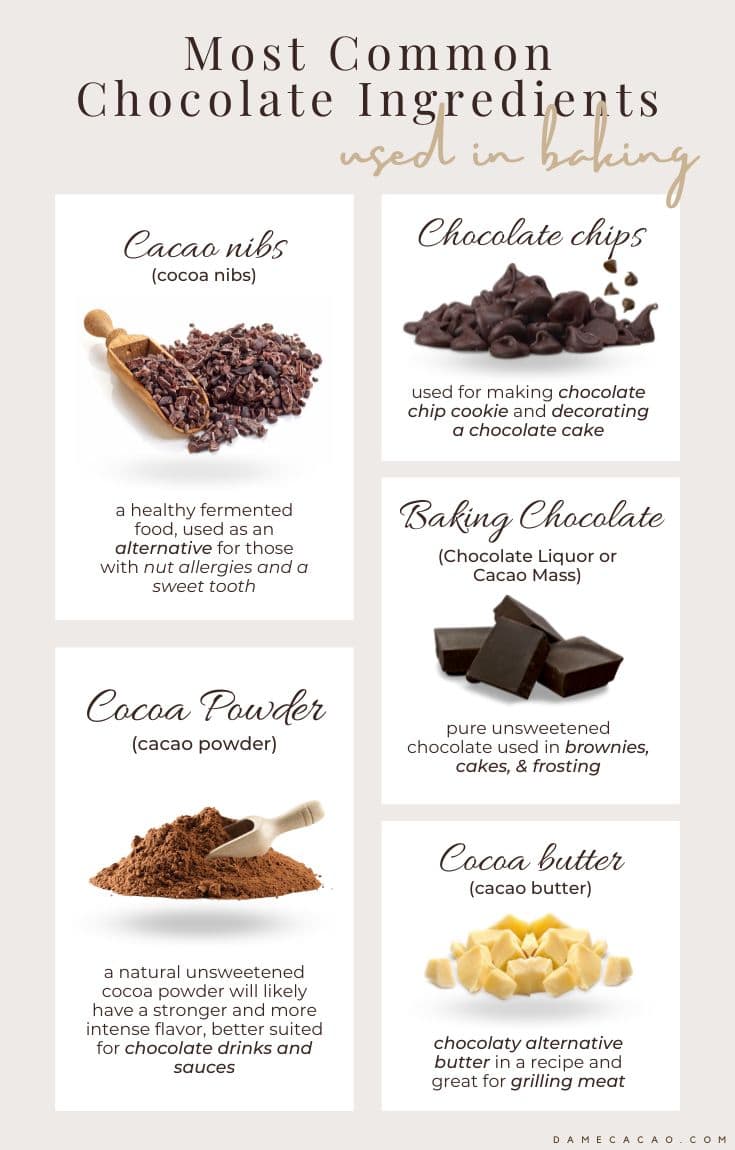
Jump To
Tips For Baking With Chocolate
Chocolate ingredients are more than just baking chocolate and cocoa powder. There's also cocoa butter (the fat of cacao beans), cacao nibs (pieces of cacao beans), and chocolate chips. Each of the latter themselves come in white, milk, and dark varieties.
Most recipes that call for general ingredients, like simply "chocolate chips" or "cocoa powder" will taste even better if made with the higher quality versions of these. So while I'd of course recommend buying more thoughtfully-crafted chocolate for all of your baking needs, I know that's not always an option, so these tips are more wide-reaching.
- Before buying any chocolate product, look for a cacao percentage on the package to confirm you're getting the right type of chocolate (see below). If there isn't a percentage, you can also look at the grams of sugar per serving, then divide that by the grams per serving to get a rough idea of how sweet it is & possibly learn cacao percentage.
- Make sure you're buying roasted cacao nibs, not "raw" (they won't have that typical chocolaty flavor unless they're roasted).
- Expect a bit of a learning curve when it comes to things like the viscosity of chocolate when tempering, replacing nuts with nibs, and even substituting cocoa butter for other fats.
- Oh yeah, there's this thing called tempering— it's basically when you heat, cool, and then reheat chocolate to the same temperature in order for its fat (cocoa butter) to form V crystals. If your chocolate is out of temper, it will be notably less glossy and may even be crumbly in texture.
- There are two ways a chocolate comes out of temper: fat bloom and sugar bloom. Fat bloom is caused by changes in temperature which ruin the dominant form V crystals that were keeping the chocolate's shape, while sugar bloom is caused by exposure to water, which then dissolves the sugar. Both cause a whitish, almost dusty-looking film to form on the chocolate.
- There are three things that chocolate contributes to your creations beyond its luscious flavor: it absorbs moisture, adds structure, and gives texture, so keep each of those in mind when choosing chocolates for baking.
- Make sure you buy natural cocoa powder and cocoa butter, otherwise you lose most (if not all) of the unique flavors in each product.
- Chocolate expiration dates are quite variable, and if stored properly, chocolate can last several years past its best-by date.
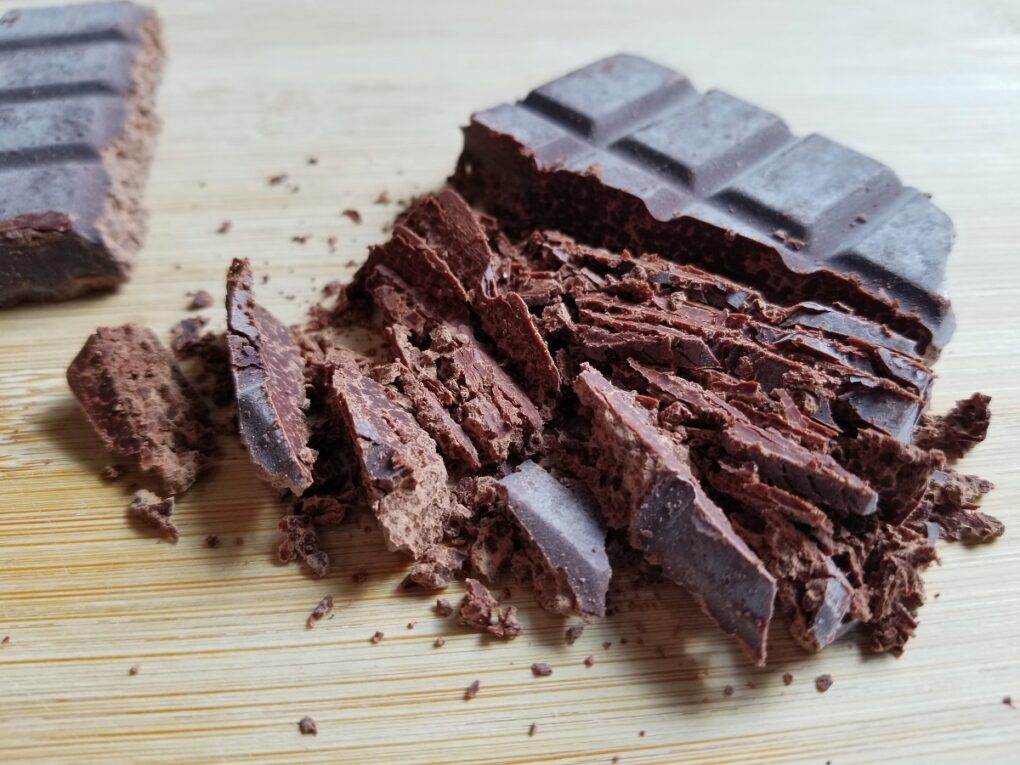
Types of Baking Chocolate
Once you're looking at a lump of melted chocolate, it's too late to ask it what percentage cacao it is, so let's make sure we do this when buying our materials. Baking chocolates come in a variety of percentages and mixtures, so it's important for you to learn how each one is different.
First there are white, milk, and dark chocolate, the former of which contains no cocoa solids but only cocoa butter, milk, and sugar. Dark chocolate contains no milk, only cacao and sugar, and as such it generally has the strongest chocolate flavor.
Then there's the cacao percentage, which just tells you how much of the chocolate is made up of cacao (rather than sugar, milk, or fillers).
Baking Chocolate (Dark)
100% Cacao
This type of chocolate is often also called Baker's Chocolate, which is confusing because that's also the name of a Kraft Foods brand of baking chocolates in various percentages. So when you need baking chocolate, make sure you buy 100% chocolate, also called chocolate liquor or unsweetened chocolate.
Bittersweet Chocolate (Dark)
60-80% Cacao
Despite being called bittersweet, you're unlikely to find this to be a bitter chocolate, as most bittersweet chocolate rarely climbs above 65%. This is the chocolate you should use for a chocolate glaze or no flour chocolate cake.

Semisweet Chocolate (Dark)
45-59% Cacao
This is the type of dark chocolate we find in most bags of commercial chocolate chips, and the high sugar content serves them when you need them to hold their shape. I rarely see a dark chocolate dip below 45% cacao, as that's the point at which the cacao-to-sugar ratio goes off the charts, but German Sweet Chocolate is a good example of a semisweet chocolate on the low end.
Milk Chocolate
28-45% Cacao
Rarely can you find a dark milk chocolate chip (cacao content 45%+), but as a true chocolate lover, I have run across a few. However most milk chocolate chips hover closer to 30-35% cacao, with a sweetness level closer to semisweet chocolate but the ability for the milk powder to caramelize.
White Chocolate
25-40% Cacao
Most white chocolate chips clock in at around 30% cacao, but many products that you might assume are white chocolate chips, are in fact not. Some use a blend of oils as the base (rather than cocoa butter), but others use a base of cocoa butter with a few fillers to stretch it out.
They can't legally call those white chocolate, so they use creative names like "white baking chips."
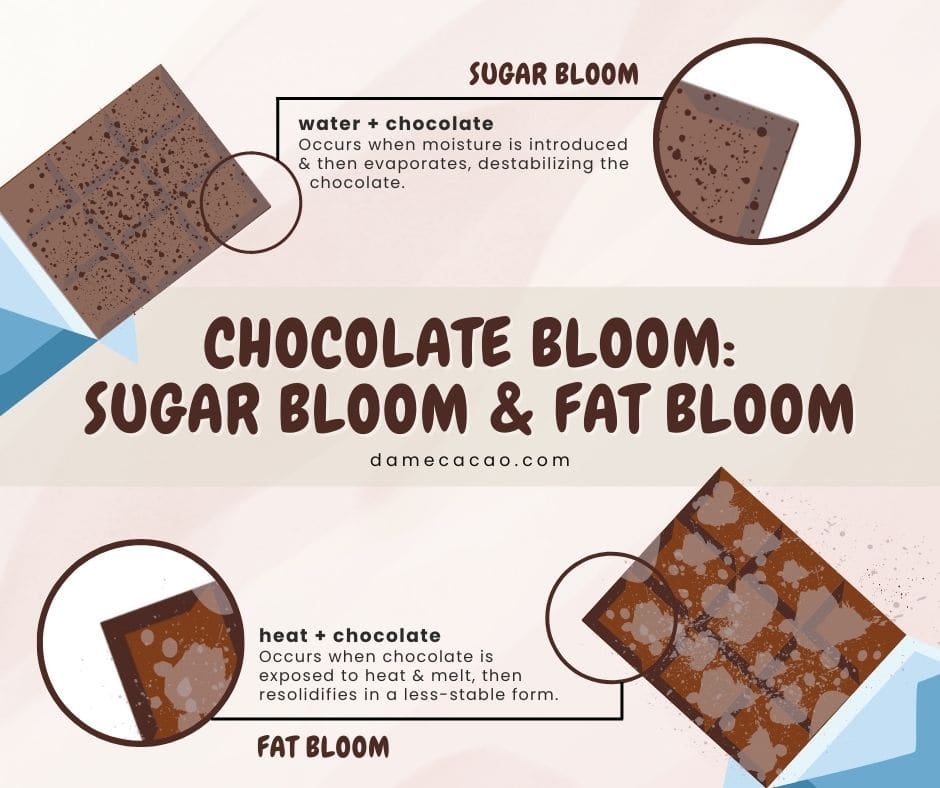
Where to Buy Chocolate for Baking
No matter where in the world you live, there are plenty of places to buy craft chocolate online. The most important thing to consider is that you're buying delicious, but ethically-and transparently-produced chocolates.
Below are some in-depth considerations for baking with a variety of cacao-derived ingredients, including chocolate, cocoa powder, and cocoa butter. Note that cacao and cocoa are the same word, just in different languages, and I use then interchangeably throughout this post.
Baking Chocolate (& Couverture Chocolates)
The term "baking chocolate" is often used to refer to blocks of 100% chocolate, also known as chocolate liquor or cacao mass. This is misleading, however, as any chocolate you bake with his technically baking chocolate.
But still, the term baking chocolate is used primarily to refer to pure unsweetened chocolate, while other percentages of dark, milk, and white chocolates are sold in blocks for home baking. However, you'll likely also encounter the terms couverture chocolate and compound chocolate (coating chocolate).
Compound chocolate is a cheap version of chocolate, made with sugar, cocoa powder, and vegetable oil. Couverture chocolate, however, is generally made with higher quality cacao and added cocoa butter, because that allows the chocolate to melt more easily for coating treats or making truffles.
You want to buy a baking bar of either regular chocolate or couverture chocolate, depending on what you're making. Most local chocolate makers will happily sell you bulk quantities of their chocolate at a discount, however, so source locally when you can.
Where to buy large blocks of craft chocolate: Belu Cacao and Bar Au Chocolat (most makers will also ship internationally for a large enough order).

Chocolate Chips for Baking
While you could theoretically make your own craft chocolate chips using some careful chopping skills, there's something to be said for pre-made chips. Not only do most chocolate chips on the market contain more than twice as much sugar as their craft counterparts, but they lack a depth of flavor.
Craft white chocolate chips are quite a bit harder to find, but several companies have come out with their own lines, some even making salted caramel or blonde chocolate chips. For those looking to make the perfect chocolate chip cookie, consider using milk chocolate chips rather than semisweet.
This is because milk chocolate chips will caramelize and lightly crisp in the hot oven, and many brands use less sugar in their milk chocolate chips than in their semisweet. They're also great for decorating a chocolate cake, as they usually contrast nicely with the shade of a chocolate frosting.
Where to buy craft chocolate chips: Dandelion Chocolate, French Broad Chocolate, Bar & Cocoa, and Mindo Chocolate (among others).
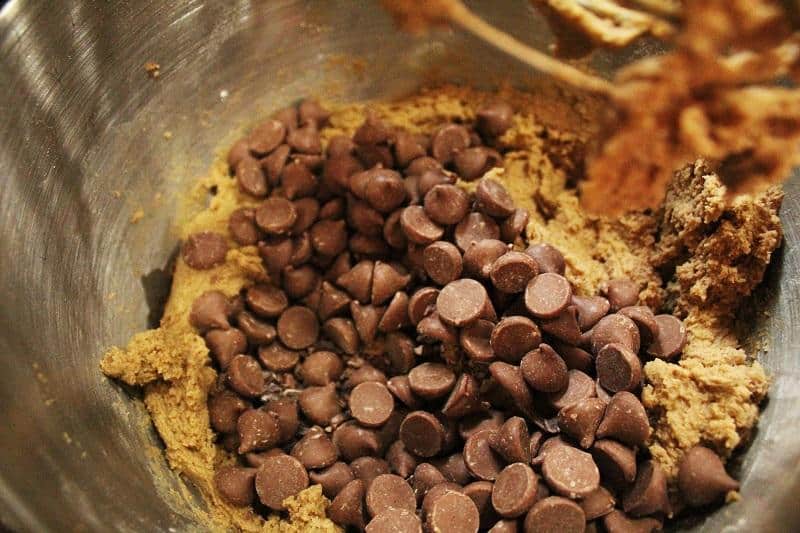
Cacao Nibs (Cocoa Nibs)
While cocoa nibs aren't the most popular chocolate baking ingredient, they are an underutilized food. Not only can you grind them into a liquid and add sugar for a less-processed type of chocolate, but they make lovely decoration!
You can also replace nuts in many recipes with cacao nibs, especially if you choose a cacao type with very nutty undertones. Overall, nibs are a healthy fermented food, and they're a great alternative for those with nut allergies and a sweet tooth.
Where to buy cacao nibs: if you can't find a local craft chocolate maker to buy nibs from, you can check Bar & Cocoa and Chocolate Alchemy, as they have some of the widest stock around of fine flavor nibs. Blue Stripes Cacao also carries nibs, as well as a variety of cacao pulp-based treats.
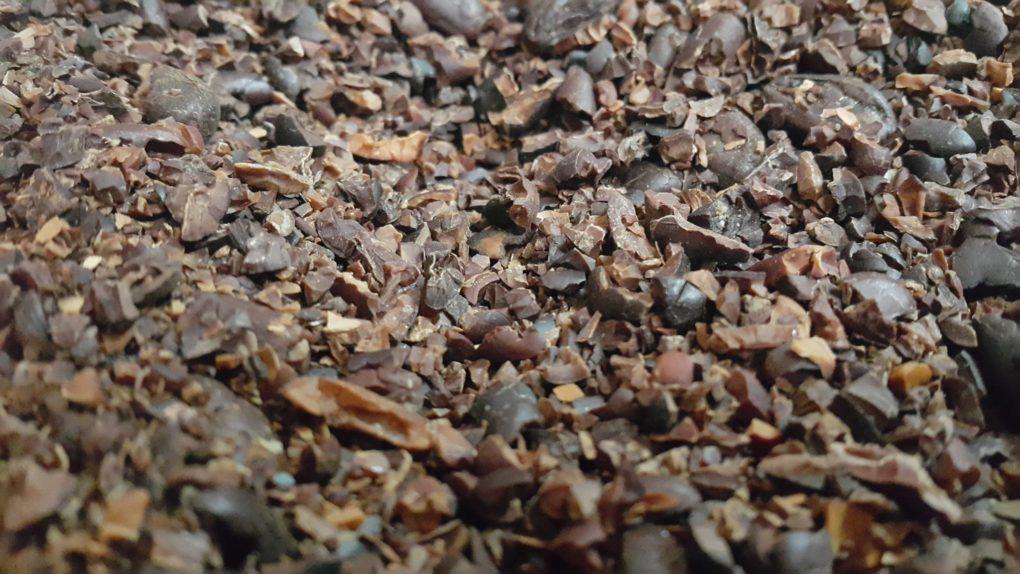
Cocoa Powder (Cacao Powder)
You'll have your pick of cocoa powders to choose from, just as you'll have your pick of chocolates. This is because cocoa powder is often seen as a by-product of cocoa butter pressing, most often for cosmetic usage. But just like any given chocolate, not all cocoa powders are created equal.
Two words to look out for are "dutched" and "alkalized," both of which mean that the cocoa powder was heavily processed to get rid of antioxidants and flatten the flavor. Look for "natural" or "natural-pressed" cocoa powders, and consider buying them directly from a craft chocolate maker.
When you buy them from a maker, they usually have a much higher concentration of cocoa butter, not to mention they were pressed from ethically-sourced cocoas. But bear in mind, a natural unsweetened cocoa powder will likely have a stronger and more intense flavor, better suited for chocolate drinks and sauces.
Where to buy high quality cacao powder: Maverick Chocolate and Mindo Chocolate.
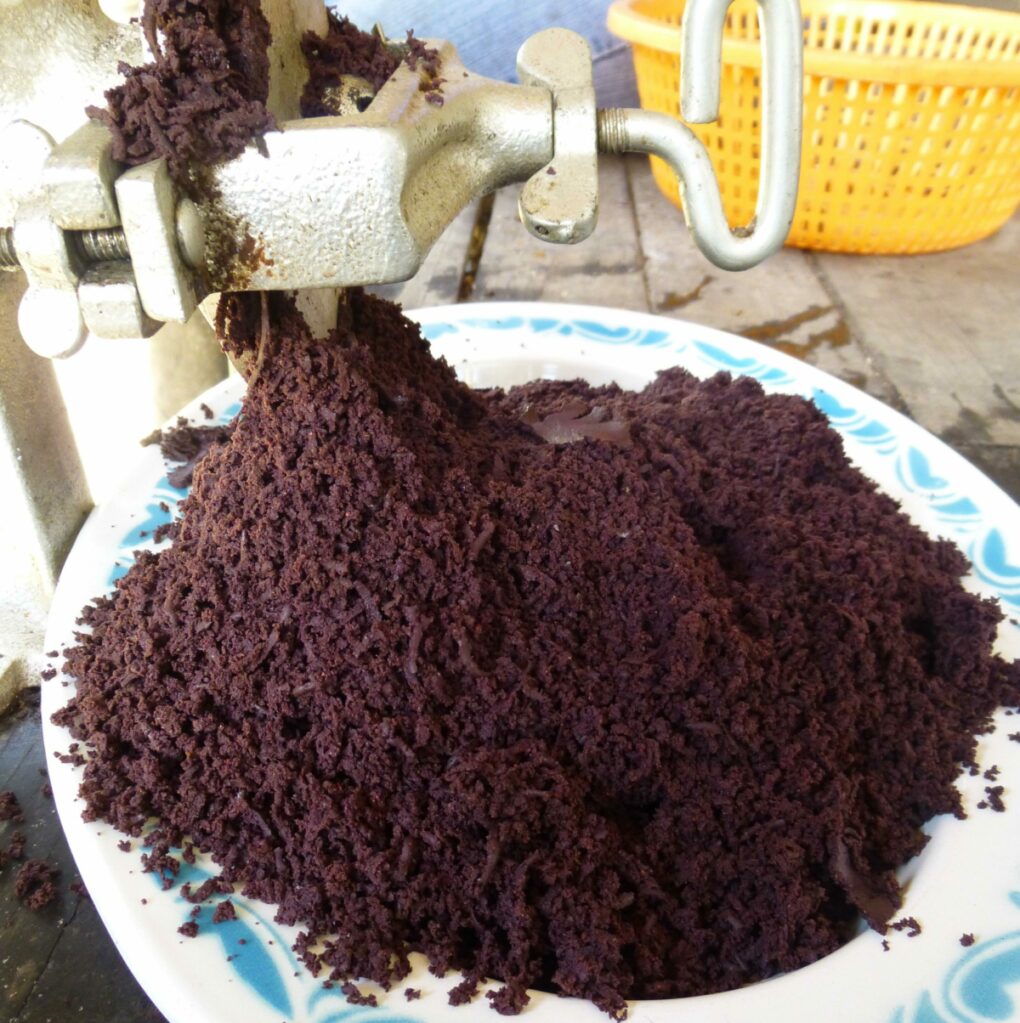
Cocoa Butter (Cacao Butter)
Cacao butter is a very dense, largely saturated fat. The cacao seed (or cacao bean) itself is made up of about half cocoa butter, and it melts right around body temperature. This means that it's solid at room temperature, making it popular for cosmetic usage, and it can be difficult to work with as a baker. It also has low histamine and inflammatory properties making it a healthier fat source than most oils.
If you're looking to replace a small portion of the butter or oil in a recipe with a chocolaty alternative, this should be your go-to. It's also great for grilling meat. For those looking for further, more cosmetic uses for any leftover cocoa butter, then sourcing high quality stuff is just as important.
I highly recommend buying your butter from a craft chocolate maker. They're selling you the same stuff they use in their products, and not only is it of the highest quality, but it's often pressed by hand from organic and directly-sourced cacao.
Where to buy food-grade cocoa butter: Meridian Cacao and on Amazon (if you live outside of the Americas, I suggest you contact a local chocolate maker and ask about buying a small quantity of cocoa butter from them).
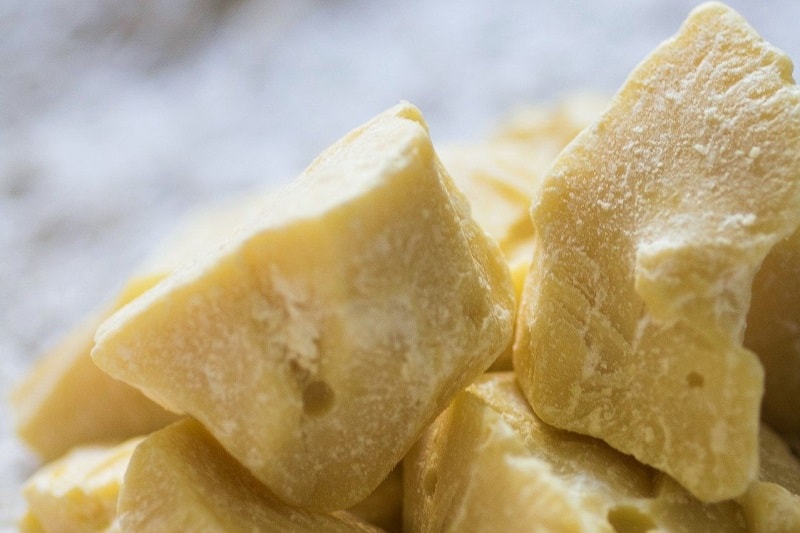
Ideas for Baking with Chocolate
A craft chocolate subscription box, like the one from Spoon & Pod, is one of many miscellaneous ways to add more craft chocolate into your baking life. Also consider making single origin brownies, chocolate-dipped caramels, or a flight of truffles made with different maker's interpretations of the same origin. Here are some other ideas to use more craft chocolate products in your everyday sweet & savory dishes:
- grill meat on the stove top with cocoa butter rather than conventional cooking oil
- replace some of the chocolate chips or nuts in a recipe with cacao nibs
- use out-of-temper or older chocolate bars to make a chocolate sauce you can keep in the fridge
Best Grocery Store Chocolate for Baking
You don't always have the time to put in an order for chocolate chips or nibs or full-on chocolate bars. Or maybe you just happen to be in the grocery store and decide to make chocolate chip cookies on a whim. This section is for you. How can you choose between the limited options in a grocery store?
Well, if you can make it to a one, you can buy a variety of ethical chocolates from Whole Foods. The answer for the rest of us is not to look at the brand names, but at the ingredients. A high quality chocolate chip will list cacao as the first ingredient, or cocoa butter if it's a milk chocolate.
My go-to in a health food store is usually Guittard Chocolate, but I've also heard good things about the keto chocolate brand Lily's. There will be no added oils, preservatives, or lecithins in a high quality chocolate.
If cocoa powder is one of the ingredients, that tells you that that's one of the lowest-quality chocolates you can buy. While the quality of the cocoa used certainly matters and makes a difference in flavor, if your primary concern is health, then go for the chocolate with the highest cacao percentage (usually around 60-65%).
In the case of a chocolate bar, 100% chocolate is for baking brownies or cakes, not for eating plain. Keep in mind what you're buying your chocolate for, and remember that you're looking to buy cacao, not cacao-flavored sugar.
Pin this guide to baking with chocolate!













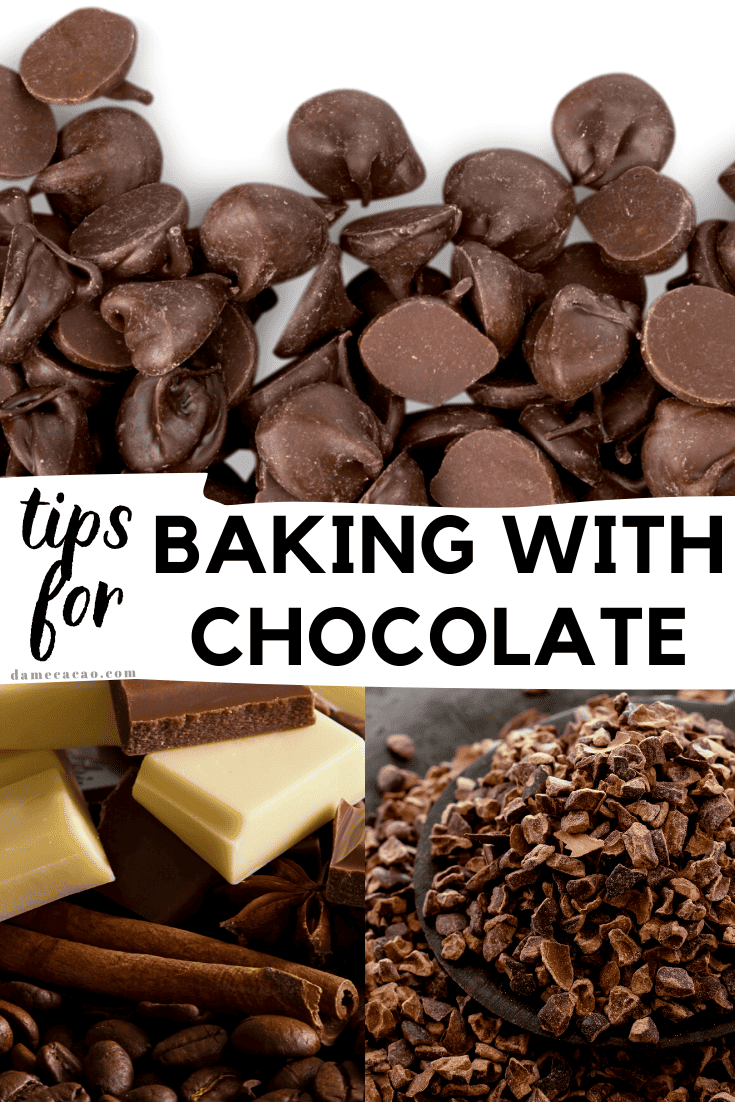




Abha Jain
Wonderful article and quality information shared.
Max
Thank you, and thanks for reading!